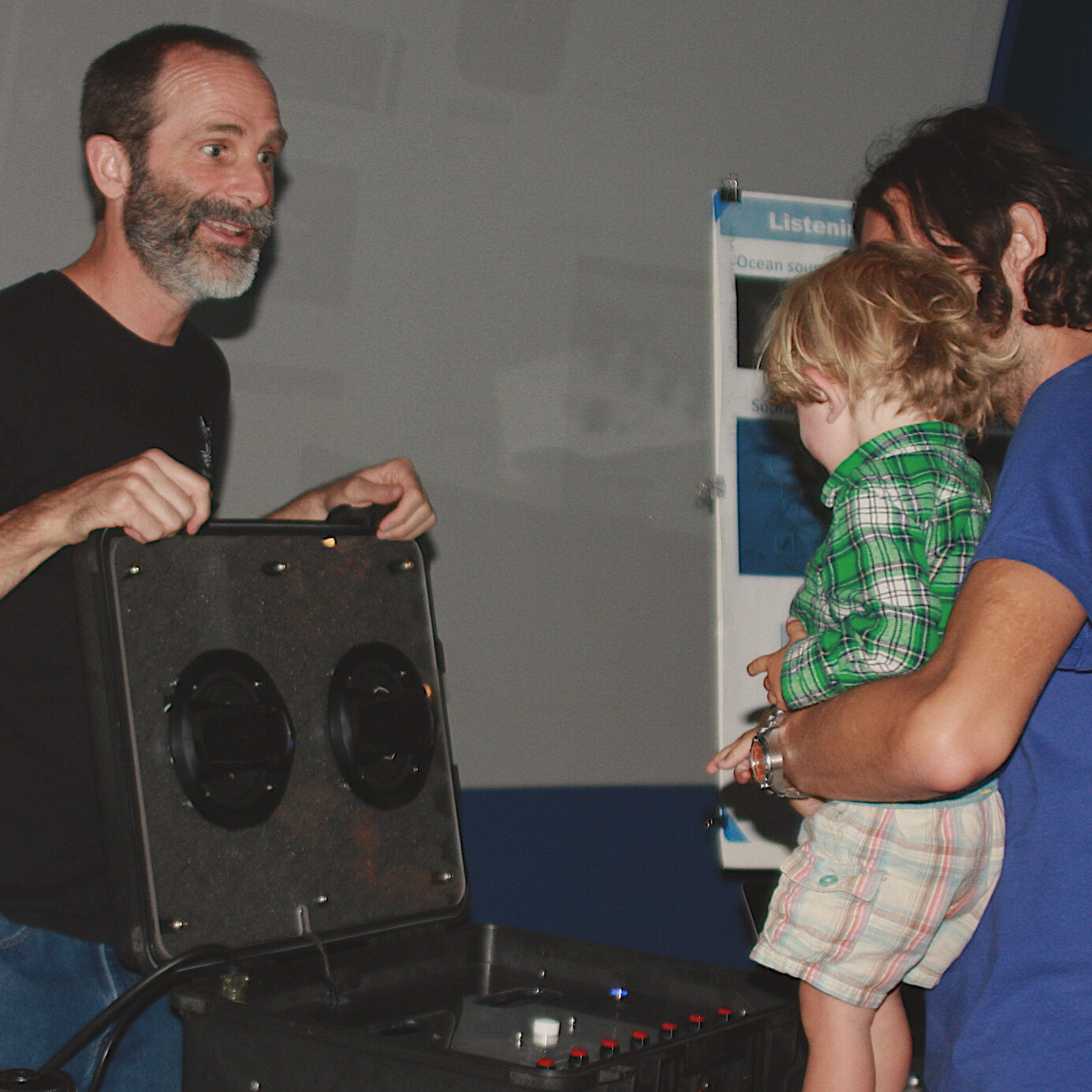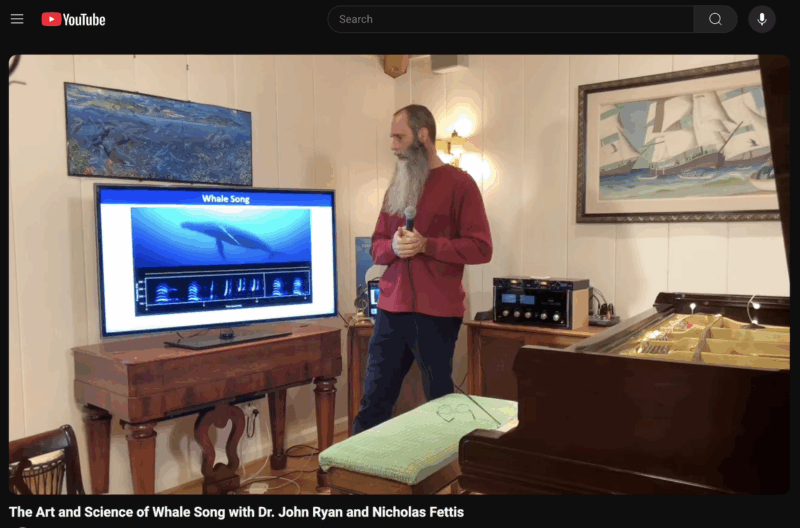
John Ryan and listening to what whales can tell us
John Ryan is a biological oceanographer who studies the ocean soundscape. Some may know him as the man who wheels around a huge sub-woofer so he can treat audiences to an acoustic demonstration of what the loudest animal on the planet sounds (and feels) like. Ryan uses acoustic monitoring to track whale calls with hydrophones and his research helps uncover how whales communicate, forage, and respond to environmental stressors.
Share
About John Ryan
John Ryan is a biological oceanographer at the Monterey Bay Aquarium Research Institute (MBARI) who studies the ocean soundscape. Some may remember him as the man who wheels around a huge sub-woofer to various events – like the 2024 BWBS’ awards ceremony at the Port of Los Angeles – so he can treat audiences to an acoustic demonstration of what the loudest animal on the planet sounds (and feels) like. Ryan’s recordings create a visceral experience that brings the ocean’s voices to life – offering a way for people to connect with why conservation and the ocean soundscape matter, and wonder about all we have yet to learn. When not rattling the walls of a massive port warehouse with whale calls, Ryan uses acoustic monitoring to track whale calls with hydrophones – underwater microphones anchored to the seafloor that record sound continuously. His research helps uncover how whales communicate, forage, and respond to environmental stressors.

A Six-Year Acoustic Study Goes Viral
As featured recently in Inside Climate News’ Changes in Nature’s Symphony Can Reflect Climate Impacts and widely shared online, Ryan co-led a six year acoustic study: Audible changes in marine trophic ecology: Baleen whale song tracks foraging conditions in the eastern North Pacific. The findings were striking: during the marine heatwave known as “The Blob,” which triggered widespread food shortages and toxic algal blooms, detection of song from blue, fin, and humpback whales was exceptionally low. Thereafter, song detection tracked major changes in food resources, differing between whale species.
Taken together, the extensive observational and theoretical perspectives of this research underscore that listening to whale songs is much more than a rich sensing experience, it is a window into the amazing lives of whales. – John Ryan
This research highlights the profound impacts of climate-driven ocean changes on whale behavior and underscores the urgency of adaptive and collaborative conservation strategies.

What is John working on now?
John’s working on finishing a study using acoustic vector sensing of blue whales in the Monterey Bay National Marine Sanctuary which reveals how large year-to-year changes in upwelling strength changes the percentage of time that we hear blue whales in high ship traffic regions. This research emphasizes the intersections between highly variable natural forcing of whale habitat occupancy and the relatively fixed spatial footprint of concentrated vessel movements.
Partnering with BWBS
Ryan’s research supports Protecting Blue Whales and Blue Skies collaborative efforts. By researching whale vocalizations and factors that impact whale behavior and habitat, including vessel noise, his findings help inform BWBS’s voluntary Vessel Speed Reduction (VSR) program and efforts to better understand how human-driven changes, including maritime trade, and vessel speed reduction, can support endangered species protection.
John Ryan on Mongabay: Listening to whales is key to their conservation
MBARI’s Listening Room, which includes FreeSound clips and a Live Stream
Downloadable recordings on FreeSound
Images: Ryan sharing ocean sounds with the public at the Monterey Bay National Marine Sanctuary Exploration Center; presenting on The Art and Science of Whale Song with Dr. John Ryan and Nicholas Fettis; and on a sunfish research cruise in the Galapagos